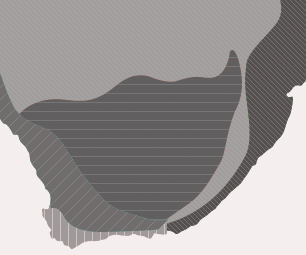Cryptocarya myrtifolia
Cryptocarya myrtifolia Stapf
Family: Lauraceae
Common names: myrtle quince, myrtle-leaved wild-quince, camphor wild-quince (Eng.); mirtekweper, wildekanferboom (Afr.); umthungwa, unthungwane (isiXhosa); umngqabe (isiZulu)
SA Tree No: 115
Introduction
Evergreen tree, 10–20 m tall, leaves green above, bluish below, very small cream flowers in clusters in early summer followed by reddish fruits. The leaves, bark and twigs have a distinct smell of camphor.

Conservation Status
Status
Vulnerable (VU). Cryptocarya myrtifolia is an uncommon species and has experienced an estimated 30% decline in population over the past 150 years caused by destructive harvesting of bark for the traditional medicine market, and deforestation and habitat loss for urban expansion.
Distribution and habitat
Distribution description
Cryptocarya myrtifolia has a scattered distribution, it occurs on steep slopes and valley bottoms, often close to waterfalls and streams, in coastal, scarp and mistbelt forest to 1 500 m, in Eastern Cape and KwaZulu-Natal.
Uses
Use
The bark is heavily used in traditional medicine for magical and medicinal purposes and is traded in Durban and Johannesburg medicinal plant markets.
References
- Boon, R. 2010. Pooley's trees of eastern South Africa, a complete guide. Flora & Fauna Publications Trust, Durban.
- Williams, V.L., et al. 2008. Cryptocarya myrtifolia Stapf. National Assessment: Red List of South African Plants. https://redlist.sanbi.org/species.php?species=1018-5.
Plant Attributes:
Plant Type: Tree
SA Distribution: Eastern Cape, KwaZulu-Natal
Soil type: Loam
Flowering season: Early Summer
PH:
Flower colour: Cream
Aspect: Shade, Morning Sun (Semi Shade), Afternoon Sun (Semi Shade)
Gardening skill: Average
Special Features:
Horticultural zones








Rate this article
Article well written and informative
Rate this plant
Is this an interesting plant?
Login to add your Comment
Back to topNot registered yet? Click here to register.